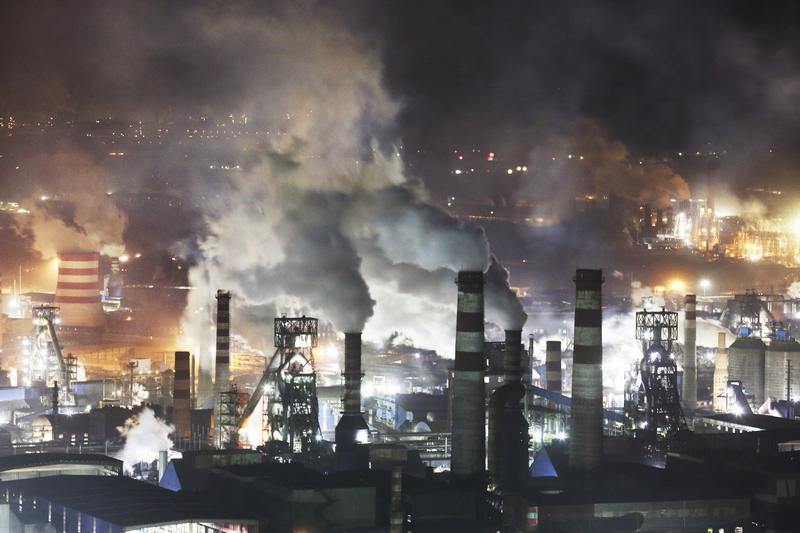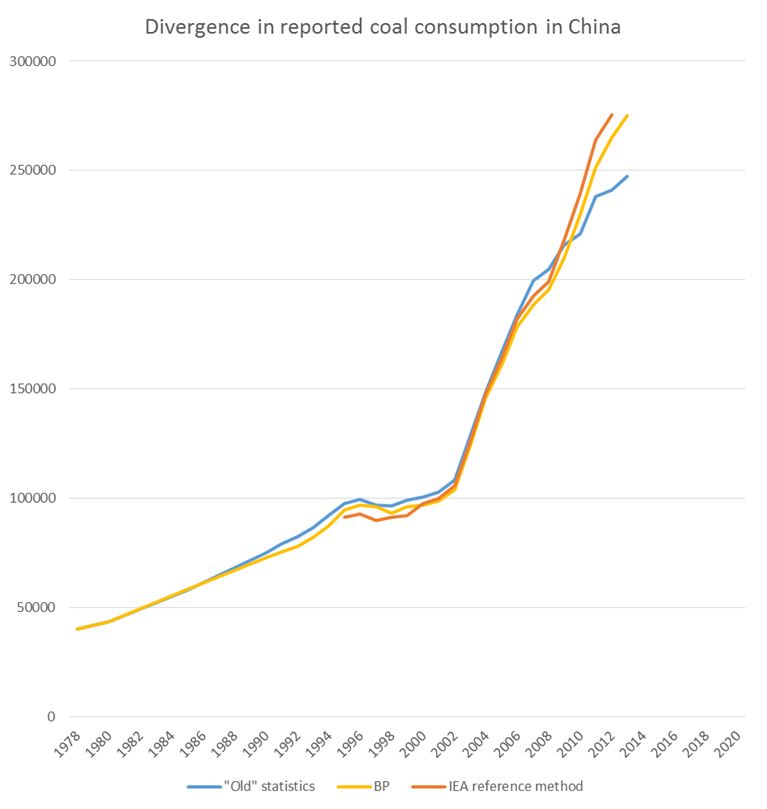How China produced more coal than it thought in 2013 – and why that means it may cut emissions faster

When China released its latest economic data all anyone talked about was the dramatic 2.9% fall in coal consumption.
But there was another bombshell tucked away in the official communique that could have a major bearing on China’s coal use and carbon emissions in years to come.
Though there was a decrease in coal production and consumption from 2013 to 2014, the absolute level for 2013 had been revised upwards by 400-600 million tonnes (from 3.62 to 4.05 billion).
The difference between those two figures is roughly equal to the total consumption of Japan and South Korea, or Germany, Poland, UK, Czech Republic, Italy and France combined.
Provinces and localities lied to central government
We’ve known for years that China’s official statistics have seriously under-reported coal consumption.
Some of this distortion of data dates back to the 1990s’ drive to close down old and dangerous coal mines. Many of these mines continued to operate, defying the government’s orders. Secret mines – however – don’t enter their output into official government statistics.
Another distortion came around 2010-2012, when coal consumption was still growing rapidly and many provinces and localities were failing to meet their energy intensity targets. Instead, they fudged the numbers to keep the central government happy.
See also: All the latest climate and energy news from China
So how did the numbers get changed?
The recent revision of statistics derives from China’s 2013 economic census, an enormous national effort conducted every five years designed to collect much more detailed data on the economy than is done for the annual energy statistics. This more comprehensive data collection seems to have finally bridged the gaps in reporting.
More coal burned – means less coal to burn
In preparation for its upcoming 5-year plan for the years 2016-2020, China has already put in place a set of comprehensive energy targets. Here are the most important ones:

If China implements these these targets in full that would probably mean coal consumption peaking before 2020 at the latest.
By setting the bar higher the revision of the base year numbers gives these targets a lot more teeth. It may mean China has burnt more coal than we thought, but because the targets are set, it also means it can now burn far less than thought.
In fact the maximum carbon emission level consistent with the 2020 targets would be around a billion tonnes lower than before coal stats were revised. This would imply that we’ll see the kind of action from China that would enable global CO2 emissions to peak — the key milestone for putting the world on track to avoid the worst consequences of climate change.
Significantly, the State Council document that established these targets – published several months before the February’s communique – does not specify any base year levels to compare them with. This means that there is no automatic need for revision.
Will targets be changed?
That said, there are voices in Beijing calling for an increase in the total energy target. The director of the National Energy Administration (NEA) recently projected a total energy consumption growth rate of 3.4% until 2020, which implies annual total energy consumption of 5.2 billion tonnes by then.
But even with that change, the non-fossil energy and gas targets would still limit coal to around 58% of the total, translating into roughly 4.2 billion tons of raw coal.

In other words, even if the 2020 energy target was revised, there’s not much point in updating the 2020 coal target.
Revision of the total energy target would increase consumption of oil and gas, and therefore CO2 emissions. If it was raised to 5 billion tonnes, the maximum emission level consistent with meeting 2020 targets would increase by around 500 million tonnes.
Even with that increase, the maximum CO2 emissions growth rate consistent with meeting the 2020 targets would be half the rate implied by the targets before the statistics were revised earlier this year.
Impact of China’s coal statistics revision on maximum CO2 emission growth by 2020 under the State Council Energy Plan (mln. t CO2)
| “Old statistics” | “New Statistics” | |
| 2013 CO2 emissions | 8,700 | 9,900 |
| Level in line with 2020 targets | 10,300 | 10,300–10,800* |
| Max. increase2013-2020 | 1,700 | 500-900 |
| Max growth rate 2013-2020 | 2.5% | 0.7%-1.2% |
*Higher end with a revision of total energy consumption target
Whatever happens it’s worth noting that the revision demonstrates that the economic census works and is able to correct distortions in yearly data. As for the implementation of China’s energy targets, it will be crucial to fix the gaps in the yearly data collection system that allowed the distortion to persist until now.

